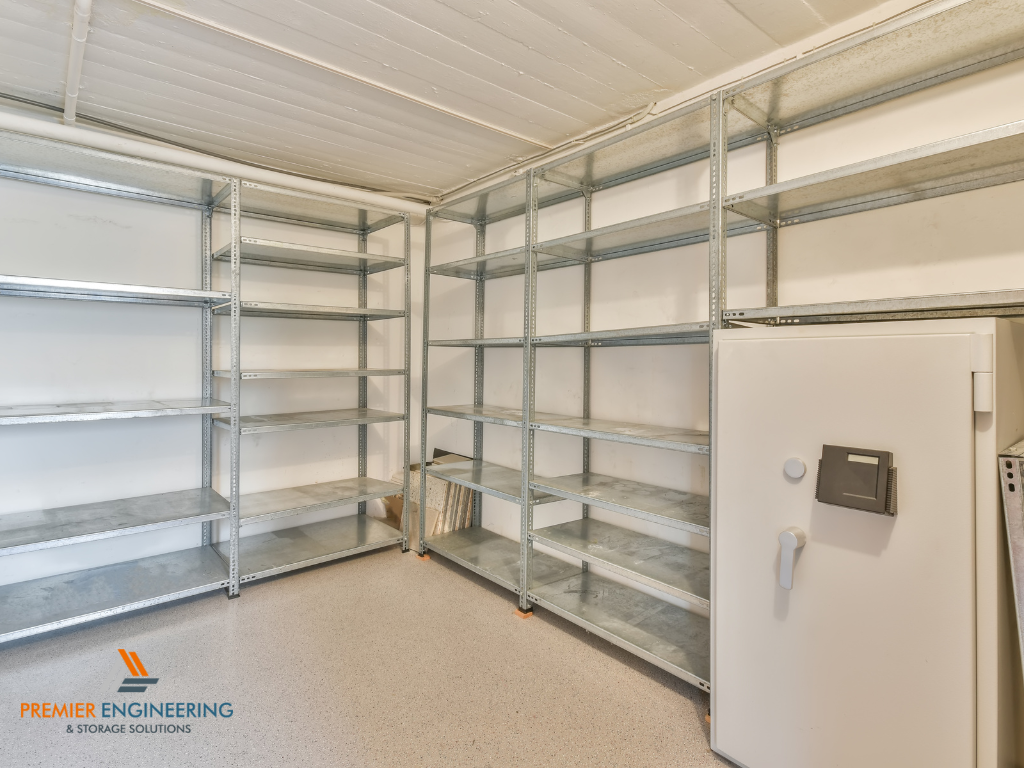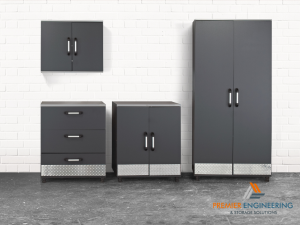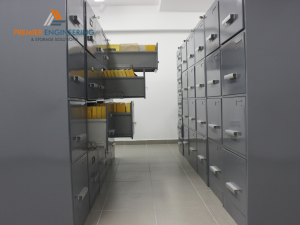Table of contents
In numerous workplaces and even homes, heavy-duty shelving units are essential storage solutions. These units, whether industrial shelving units or metal storage cabinets, promise robustness. However, their effectiveness is only as good as the safety measures employed during their use. Let’s delve into the nuanced details of safely handling these storage marvels.
Understanding Weight Limits and Distribution
Determine Specific Shelf Capacities: Each shelving brand and model will have distinct weight limits. Refer to the manufacturer’s guide that came with your unit. If lost, most brands have these guidelines available online or through customer service.
Using Scales for Accuracy: Instead of guesstimating, use a scale to weigh items before placing them on the shelving units. This ensures you never inadvertently surpass the recommended weight.
Distribute Weight Evenly: Ensure that the weight is not concentrated in one section. Use shelf dividers, if necessary, to remind you of weight distribution zones.
Anchoring: Not Just For Tall Units
Wall Anchoring is Crucial: All units, irrespective of their height, benefit from anchoring. Wall anchors, available at hardware stores, offer an added layer of stability.
Floor Leveling: For shelving units placed on uneven floors, use leveling feet or shims. This not only prevents wobbling but evenly distributes weight across the unit.
Regular Maintenance and Inspection
Monthly Visual Check: At the start of each month, do a visual check. Look for any signs of bending, rust (particularly in metal storage cabinets), or any other wear and tear.
Annual In-depth Inspection: Once a year, empty the shelves. Check the integrity of each shelf, the backboard, and the anchoring system. For metal units, look out for rust or corrosion. If your unit has a stainless steel splashback, ensure it’s securely attached and free from damage.
Maintain a Log: Keep a maintenance log nearby the unit. Jot down when checks are done, issues noticed, and when they were rectified.
Training and Knowledge Sharing
If you’re in a workplace, ensure that all employees are trained on the correct usage of the shelving units. Even at home, make sure all family members understand the importance of not overloading shelves and reporting any noticeable issues.
Choosing the Right Equipment
Don’t Skimp on Quality: Investing in high-quality storage cabinets and shelving units pays off in the long run. Trusted brands often undergo rigorous testing to ensure their products are safe and durable.
Understanding the Shelving UnitS System and Its Purpose
As we delve deeper into the realm of shelving, it’s essential to understand its nomenclature, structure, and diverse applications. From homes to mammoth warehouses, the ubiquitous shelving unit is more than just an assembly of planks and screws.
What is a Shelving Unit System?
A shelving unit system refers to a pre-designed arrangement of shelves that come together to provide storage solutions. It consists of a framework of uprights, braces, and shelves, tailored for specific weight capacities and purposes. These systems are meticulously designed for stability, scalability, and ease of assembly. Depending on the design, some can be expanded upon, offering modularity and adaptability to evolving storage needs.
What are the Uses of Shelving Units?
Shelving units are versatile, finding their way into a plethora of environments:
- Homes: From displaying books to storing kitchenware, they help in organizing and beautifying spaces.
- Retail: Shops use them to exhibit products in an accessible and visually appealing manner.
- Offices: They house important files, supplies, and sometimes, decorative items to spruce up the workspace.
- Libraries: Rows and rows of shelving units systematically host thousands of books.
- Laboratories: They store equipment, samples, and chemicals safely.
What is Shelving in Furniture?
In the realm of furniture, shelving refers to a piece or a system specifically designed to showcase or store items. Unlike cabinets, which have doors, shelving is typically open, making items easily visible and accessible. It can be standalone, like bookcases, or integrated into other furniture pieces, such as beds with headboard shelves or coffee tables with undershelves.
What is the Purpose of Shelving in Warehousing?
Warehousing demands efficient use of space, quick access, and an organized system for inventory management. Here’s where shelving units play a pivotal role:
- Space Maximization: They utilize vertical space, ensuring floor areas are not cluttered.
- Inventory Organization: Items can be categorized and stored systematically, reducing retrieval times.
- Safety: Proper shelving reduces the risk of accidents, ensuring items are not stacked haphazardly.
- Inventory Tracking: With structured shelving, inventory checks become more streamlined.
Consider Additional Safety Features
Some shelving units come with anti-tip features, reinforced backboards, or rust-resistant coatings. These can be particularly beneficial in environments where there’s a higher risk of mishaps.
To sum it up, shelving units, in all their variations, serve the primary purpose of organization. By understanding their structure and applications, we can make informed choices, ensuring we utilize them to their fullest potential.
Craving more insights?
Dive deeper into the world of shelving units on our blog. Your storage solution journey is just a click away!








